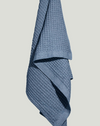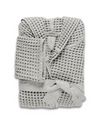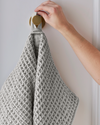
In pursuing more sustainable and eco-friendly laundry practices, wool dryer balls have emerged as a favored alternative to traditional dryer sheets. Not only do these balls reduce waste, but they also offer a host of benefits ranging from softening clothes to minimizing drying time.
One common question that arises among users is: How many wool dryer balls should be used per load for optimal results? Let's discuss the magic number that ensures efficient and effective laundry outcomes.
What Exactly Are Wool Dryer Balls?
Wool dryer balls are essentially natural fabric softeners made from 100 percent wool, free from synthetic materials and scents. Their purpose goes beyond softening garments — they also help reduce wrinkles, eliminate static cling, and speed up drying. These eco-friendly alternatives are durable, with some claiming to last up to 1,000 loads, making them a sustainable choice.
When placed in the dryer with a load of laundry, these balls create space between clothes, letting heat circulate more evenly, thereby expediting drying. With their gentle tumbling action, they contribute to the fluffiness of fabrics and help aerate the laundry.
This motion and friction minimizes wrinkles and static cling, resulting in softer, fresher clothes. Overall, wool dryer balls are a versatile, reusable, and environmentally conscious option, providing numerous benefits that extend beyond just laundry.
Why Does the Number of Dryer Balls Matter?
The quantity of wool dryer balls used per load helps you reap the maximum benefit of these laundry wonders. This is because the number of balls directly impacts the efficiency and effectiveness of the drying process, affecting variables like softness, static reduction, and drying time. To achieve optimal results, it is essential to understand the significance of using the right amount.
What Factors Influence the Number of Dryer Balls?
Several factors come into play when determining the ideal number of wool dryer balls to use per load. You’ll want to consider load size, the type of fabric being dried, and the desired outcome — whether it's softness, reduced wrinkles, or shorter drying times, as each variable plays a role in determining the dryer ball usage suitable for your specific laundry needs.
What Are the Recommended Guidelines for Wool Dryer Balls Usage?
The following recommended guidelines can help you get the best results from your wool dryer balls:
- Small Loads: For small loads, one to two balls will typically suffice.
- Medium Loads: Medium loads generally benefit from two to four balls.
- Larger Loads: Larger loads may require four to six balls to effectively soften clothes, reduce wrinkles, and speed up drying time.
By adhering to these guidelines, you can balance your laundry goals and maximize the efficiency of your wool dryer balls.
Testing and Experimentation
We encourage you to experiment with wool dryer balls and laundry load sizes by varying the number of dryer balls per load and observing the results.
Factors such as static reduction, fabric softness, and drying time should be closely monitored when experimenting. This way, you can assess whether using more balls provides better results or if a conservative approach gives you better outcomes.
Did your clothes turn out soft enough? Wrinkle-free? Did they dry faster? Experimenting with different quantities can help you fine-tune your laundry routine and find the ideal number of balls for your specific clothing types, their fabrics, and your family’s needs.
How To Care for Wool Dryer Balls
Maintaining the longevity and performance of your wool dryer balls is essential for ensuring they continue to deliver optimal results over time. You can care for these eco-friendly fabric softeners by periodically running them through a short dryer cycle to refresh and fluff them up. This simple step helps maintain their shape and effectiveness.
Cleaning wool dryer balls is a straightforward process. If needed, you can gently hand wash them with a mild detergent and let them air-dry. Avoid using harsh chemicals or high heat when cleaning the balls to prevent damaging the wool fibers. Once clean, store the dryer balls in a well-ventilated area when not in use to prevent moisture build-up.
Common Mistakes To Avoid
While wool dryer balls are versatile and eco-friendly laundry accessories, there are common mistakes that users should be mindful of to optimize their performance and efficiency.
- Using Too Few Balls: Insufficient dryer balls in a load may compromise the effectiveness of softening clothes and reducing wrinkles. Always use an adequate number of balls based on the load size for optimal results.
- Using Too Many Balls: Conversely, using excessive balls may lead to overcrowding inside the dryer, hindering proper airflow and tumbling action. This can result in longer drying times and less effective softening.
- Neglecting Maintenance: Regularly refreshing and cleaning wool dryer balls is important to maintain their performance and extend their lifespan. Neglecting maintenance practices can compromise their efficacy and durability.
By avoiding these common mistakes and adhering to best practices for using and caring for wool dryer balls, you’ll maximize the benefits of these sustainable laundry alternatives and improve your overall laundry experience.
What Are Some Sustainable Laundry Practices?
Incorporating sustainable laundry practices into your daily routine is beneficial for the environment and creates a healthier home. By adopting eco-friendly laundry tips, you can reduce your environmental footprint and contribute to a greener future.
Here are some ways to make your laundry routine more sustainable:
- Use Cold Water: Washing your clothes in cold water saves energy and helps preserve the color and quality of your garments.
- Opt for Eco-Friendly Detergents: Choose detergents that are biodegradable, phosphate-free, and free from harmful chemicals to minimize water pollution.
- Air Dry When Possible: Try air-drying your clothes instead of using a dryer whenever feasible. It conserves energy and prolongs the life of your clothing.
- Choose Energy-Efficient Appliances: Invest in energy-efficient washing machines and dryers to reduce energy consumption during laundry cycles.
- Repair and Upcycle Clothing: Extend the lifespan of your clothes by mending tears, replacing buttons, and upcycling old garments into new creations to reduce waste.
By implementing these sustainable laundry practices, you can play a part in protecting the planet while maintaining a clean and eco-friendly household.
The Takeaway
Wool dryer balls stand out as eco-friendly, efficient, and versatile alternatives to traditional fabric softeners. Understanding the importance of using the right number of dryer balls per load can positively modify the outcomes of your laundry routine.
At Onsen, we proudly support eco-friendly and Earth-sustaining practices. Try our reusable, chemical-free, and energy-efficient wool dryer balls today. Based on our product sizing, three Onsen balls are ideal for small to medium loads, while six Onsen balls are perfect for larger loads.
Sources:
Is It Best to Wash Clothes on Cold? Here’s What Experts Say | Better Homes & Gardens
Energy Efficiency | Energy Star
Why Upcycle Clothing and How It Can Benefit the Environment | Circle Planet















